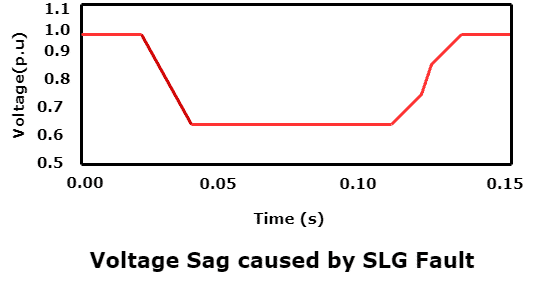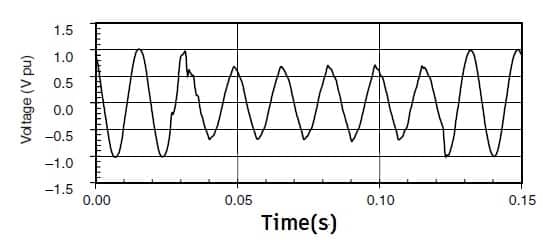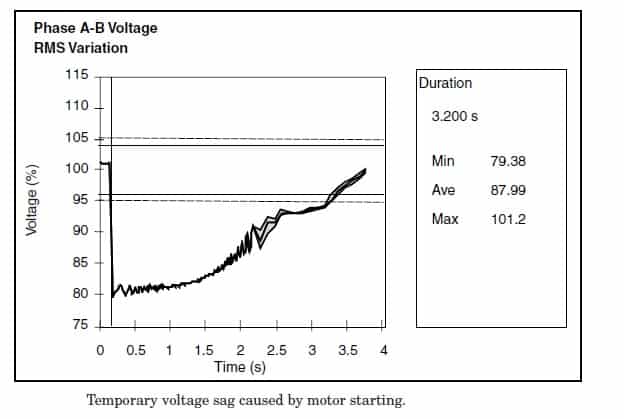Voltage sags are short duration reductions in system RMS voltage magnitude between 10 % to 90%, and duration lasting typically from a few cycles to a few seconds.The fall of voltage from 220 to 198 volts for longer than 2 minutes is the sags.The causes of voltage sags are electrical faults and starting of large rating motors on DOL starting.The voltage sags are also called voltage dips.
Sags are severe power quality problem that affects commercial and industrial customers. Sags leads to system shutdown, reduce efficiency and life span of electrical equipment. Also, the sags can cause malfunctioning of sophisticated electronics equipment.
Definition
As Per IEEE 1159
Sag is a decrease in RMS voltage between 0.1 and 0.9 pu and a time duration from 0.5 cycles to 1 min.
As Per IEC 61000-4-30
A voltage dip is a brief reduction in RMS voltage of 10% or more below specified (rated) equipment voltage for a period of 1/2cycle to 1min. The decrease in the voltage is below 90 % of nominal voltage, but not a complete interruption.
The IEC definition for this phenomenon is voltage dip. The two terms are considered to be interchangeable. Generally, sagis preferred in the US and dip is common in European countries.
Causes of Voltage Sags or Dips
Electrical Faults
The fault L-L short circuit, L-G fault,LL-G faults are the common fault occurs in the transmission system. These types of faults are most common in rainy season. The voltage falls or even collapses when the fault occurs in the transmission line.

The sudden dip or sag in the voltage cause power system breakdown. The fault travels to the common bus feeder and it affects the consumers’s equipment connected to the common bus on parallel feeders. The voltage sag waveform is given below.

Switching Large Loads in one instance
Switching on large loads in one instance cause a very large current to flow through transmission and distribution system. The transmission conductors have certain resistance. When a large current flow through the conductor, it causes a large voltage drop ( V= IR) across the conductor. As a result, the system voltage drops.
Direct online starting of Large Rating Motors
The induction motor draws a large current about 6-7 times of its full load current when started on DOL. In DOL, we apply full line voltage to stator of induction motor. The large starting current causes voltage drop in the transmission and distribution system.

Therefore, the starting method of large motors must be so chosen to avoid voltage sags in the electrical network.
Energizing large rating power transformer
The transformer draws a large magnetizing inrush current during charging. The magnitude of the current depends on the time of switching of AC waveform. Transformer produces two times more flux than its rated flux. The higher flux cause more magnetizing current.
The large starting current causes voltage drop and voltage sags in the transmission and distribution system.
Arcing Fault in the electrical System
The flow of current through the air between phase conductor or phase conductors and ground or neutral is arcing fault. This is basically high impedance fault. Loose wire connections, over heated wires, wires pinched by other objects are some common causes of arc fault. The arcing faults cause voltage sags.
Tree or other objects falling on transmission line
When any object falls on the transmission tower or conductor line to earth fault scenario happens. And, this cause voltage sags.
Construction worker digging into buried cables
During digging cable may get puncture and it begets Line to ground fault. L-G fault cause voltage drop and voltage sags. This may cause electrocution as well. Therefore, before starting digging work,presence of the electrical cables must be checked with cable fault locator.
Read Next :